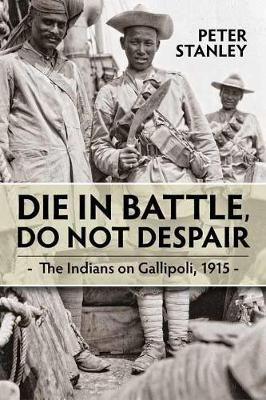In 1915 about 15,000 Indian troops - two or three times as many as previously thought - served in the dramatic and doomed eight-month Gallipoli campaign. Their part in the invasion of Gallipoli has lain largely unknown since the publication of long disregarded regimental histories and forgotten British officers' memoirs.
Force G, as it came to be known, included Sikhs, Hindus and Punjabi Musalmans (as Muslim soldiers were called) and four battalions of Gurkhas. They served in an infantry brigade, a mountain artillery brigade, in medical units and in a large contingent of mule drivers, who perhaps made the Indians'most important contribution to the campaign.
About 1,600 of the Indians who served on Gallipoli died, in actions at Gurkha Bluff and Hill 60. They took part in terrible, failed attacks, at Gully Ravine and Gully Spur and in the climactic attempt in August to seize the summit of Sari Bair- one of the Gurkhas' most cherished battle honours.
Though commemorated on the great memorial to the missing at Cape Helles (because most Indians'bodies were cremated or, actually, lost) they are practically invisible on Gallipoli today.
The Indian story of Gallipoli has barely been told before. Not only is this the first book about their part in the campaign to be published in the century since 1915, but it also tells their story in new and unexpected ways. Though inescapably drawing on records created by the force's British officers, it strives to recapture the experience of the formerly anonymous sepoys, gunners and drivers, introducing Indians of note- Mit Singh, Gambirsing Pun, Kulbahadur Gurung, and Jan Mohamed - alongside the more familiar British figures such as Cecil Allanson, who led his Gurkhas to the crest of Sari Bair at dawn on 9 August 1915. It explores for the first time the remarkably positive relationship that grew on Gallipoli between Indians and Anzacs, and includes a complete list of the Indian Army dead commemorated on the Helles Memorial on Gallipoli.
Professor Peter Stanley, one of Australia's most distinguished military social historians, has drawn on an extensive range of unpublished evidence, including official and private records in Britain, Australia, New Zealand and India to tell the story of the Indian experience of Gallipoli that has waited a century to be told.
- ISBN10 1910294675
- ISBN13 9781910294673
- Publish Date 12 May 2015
- Publish Status Out of Print
- Out of Print 11 May 2021
- Publish Country GB
- Imprint Helion & Company
- Format Hardcover
- Pages 304
- Language English
